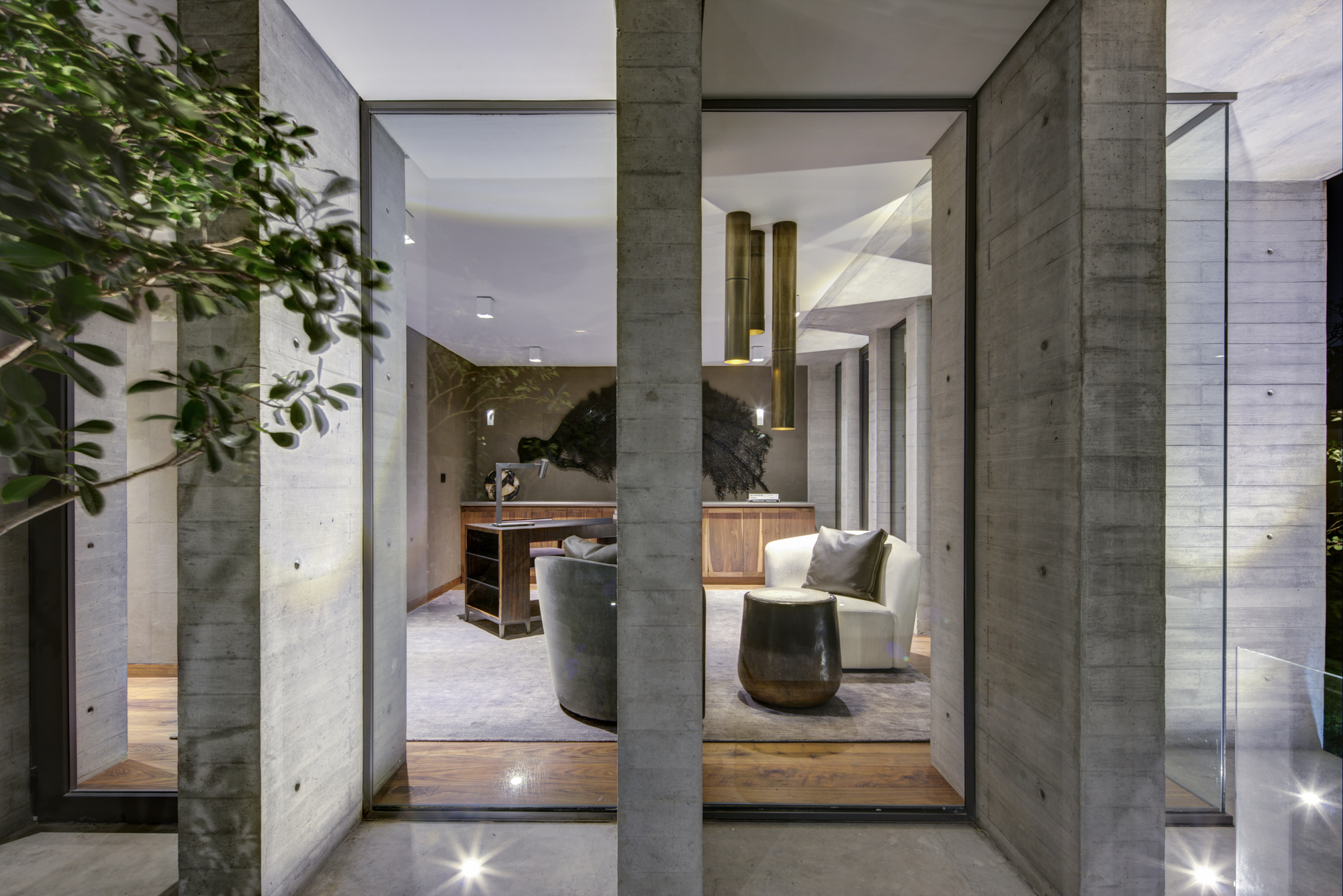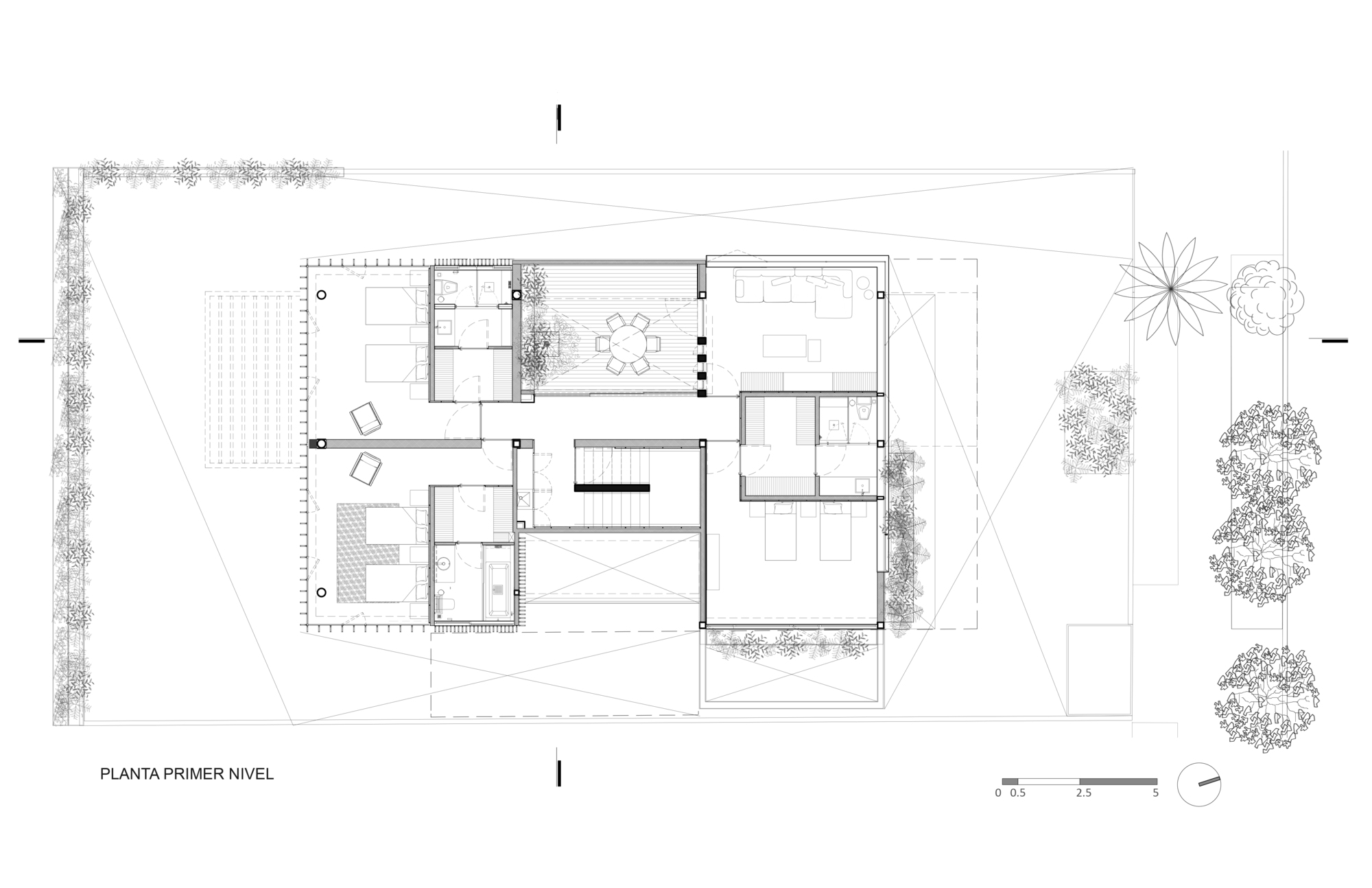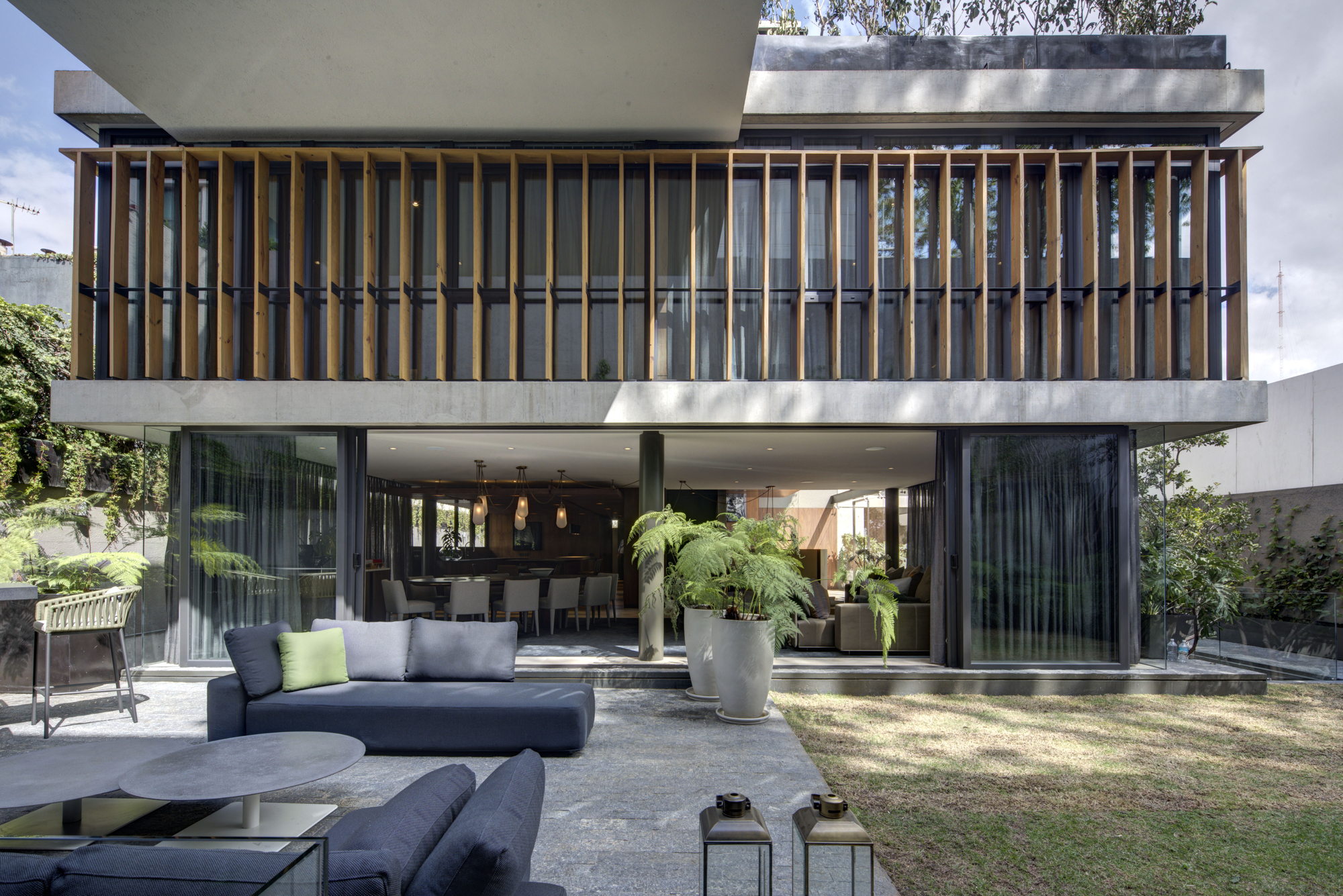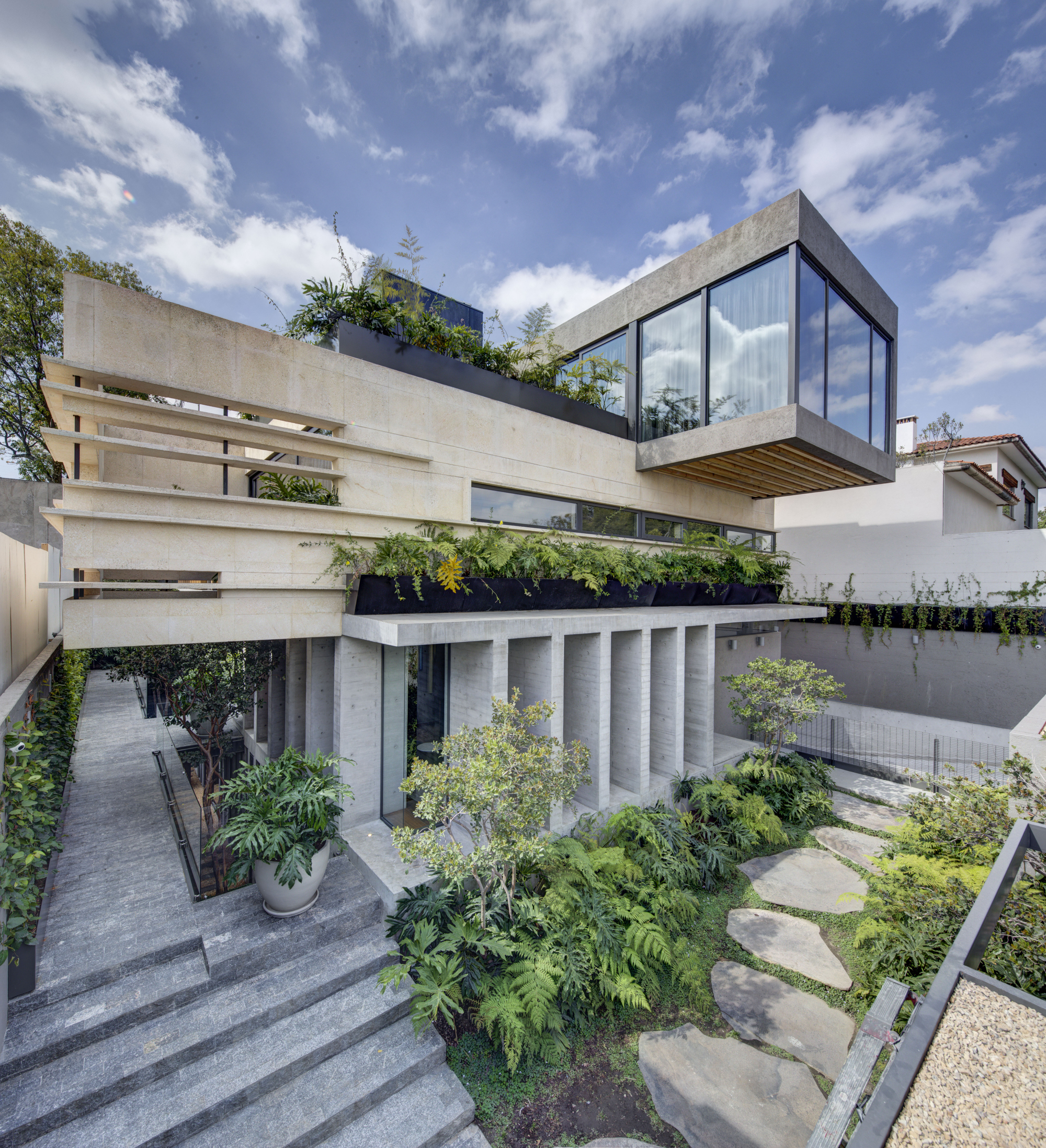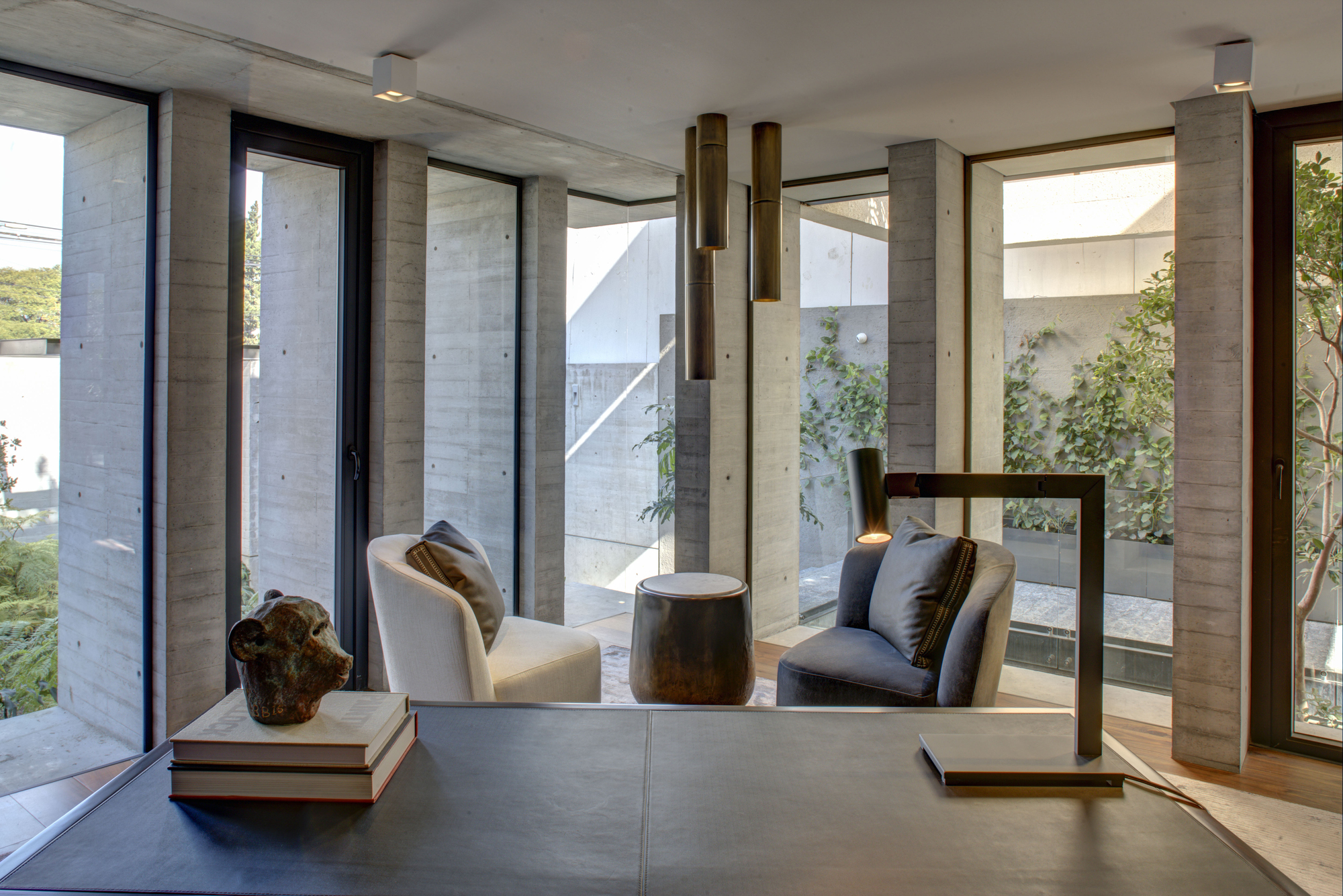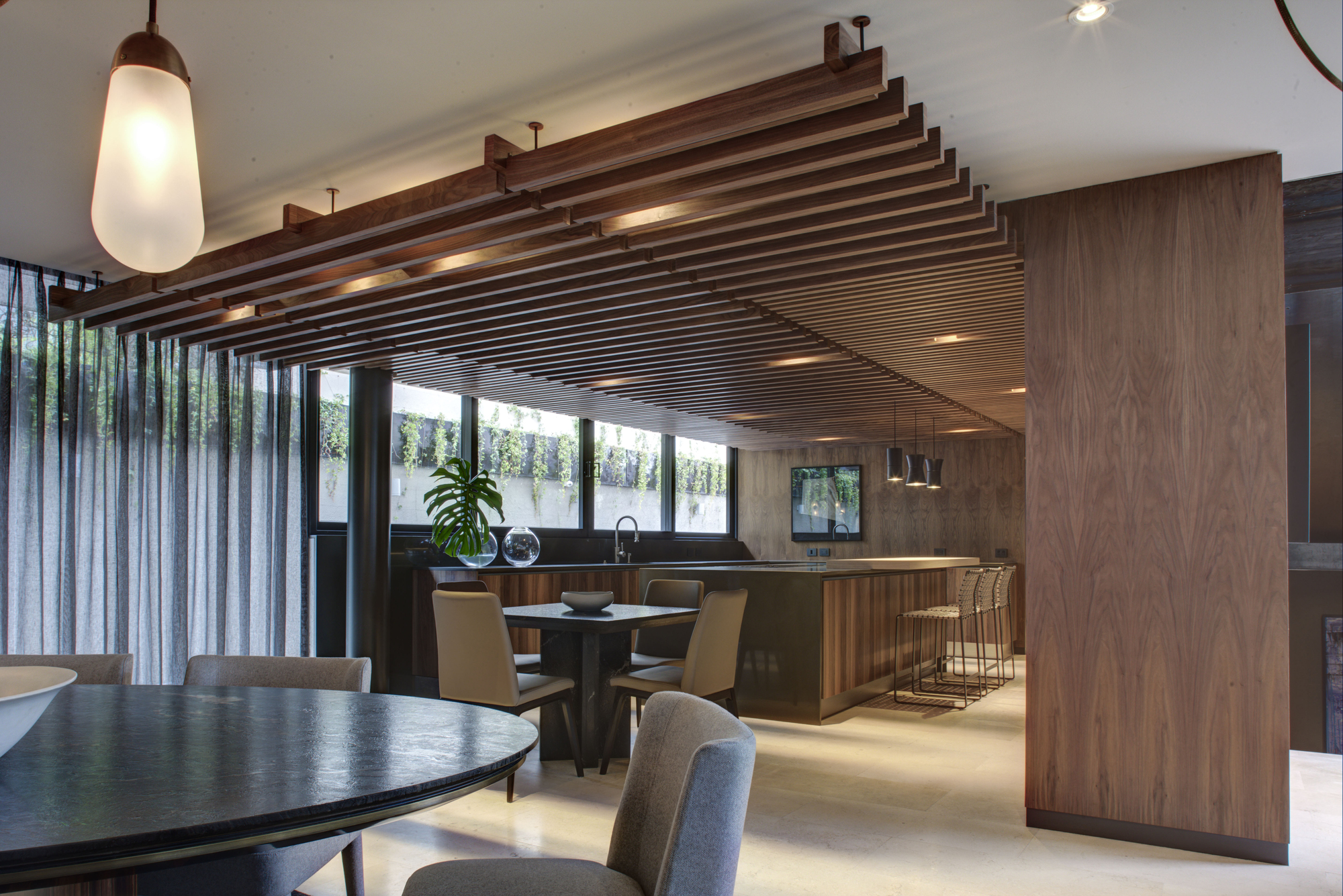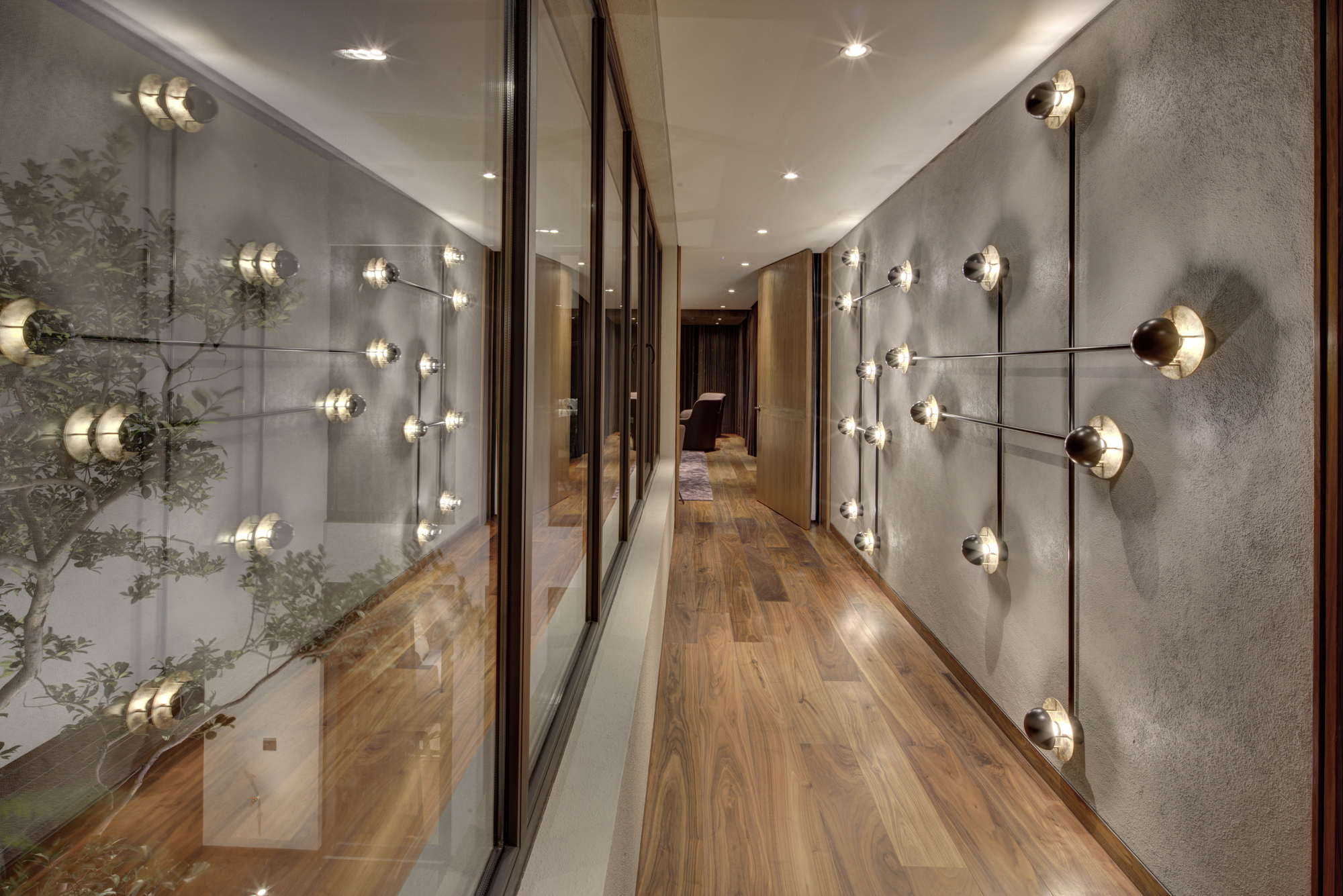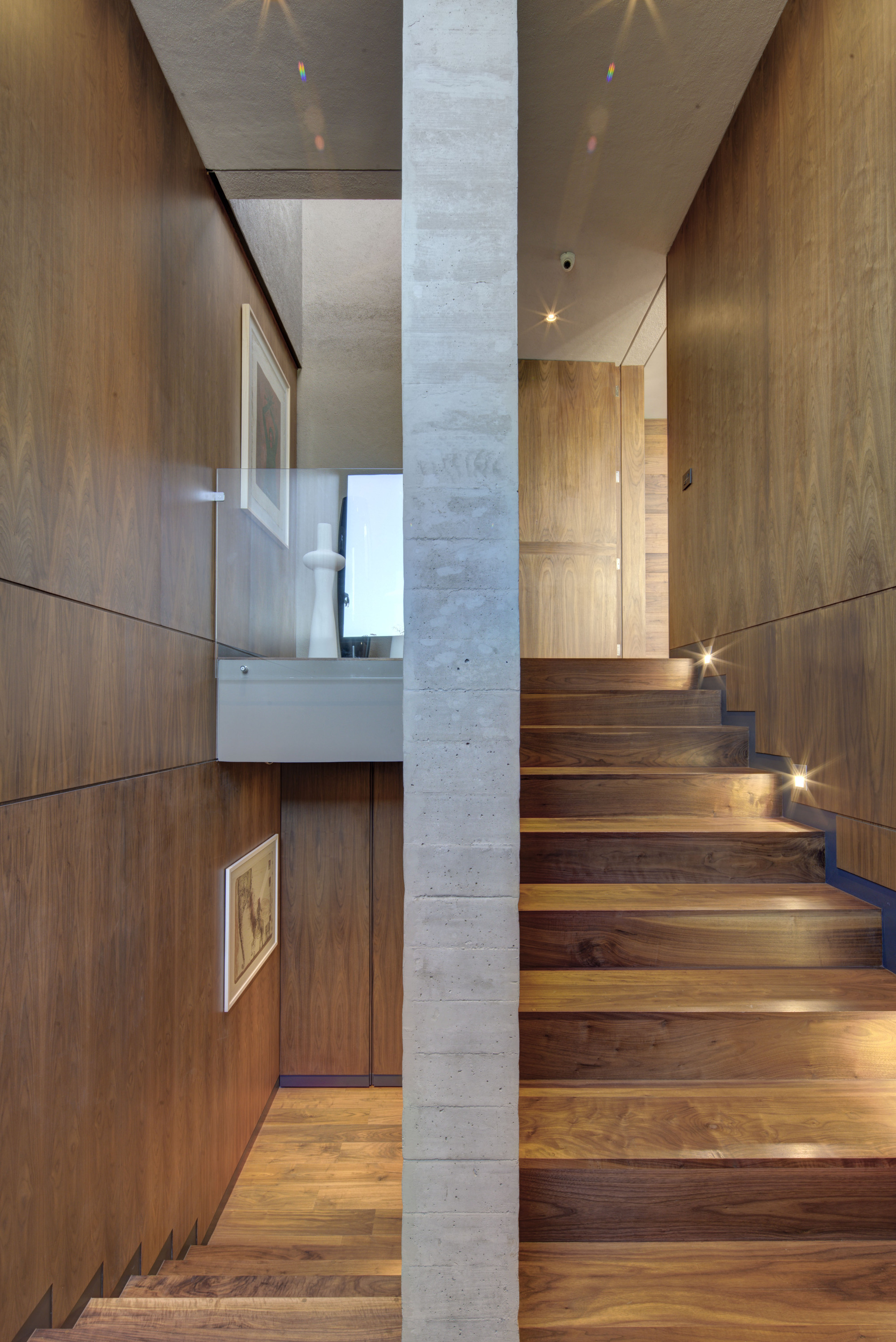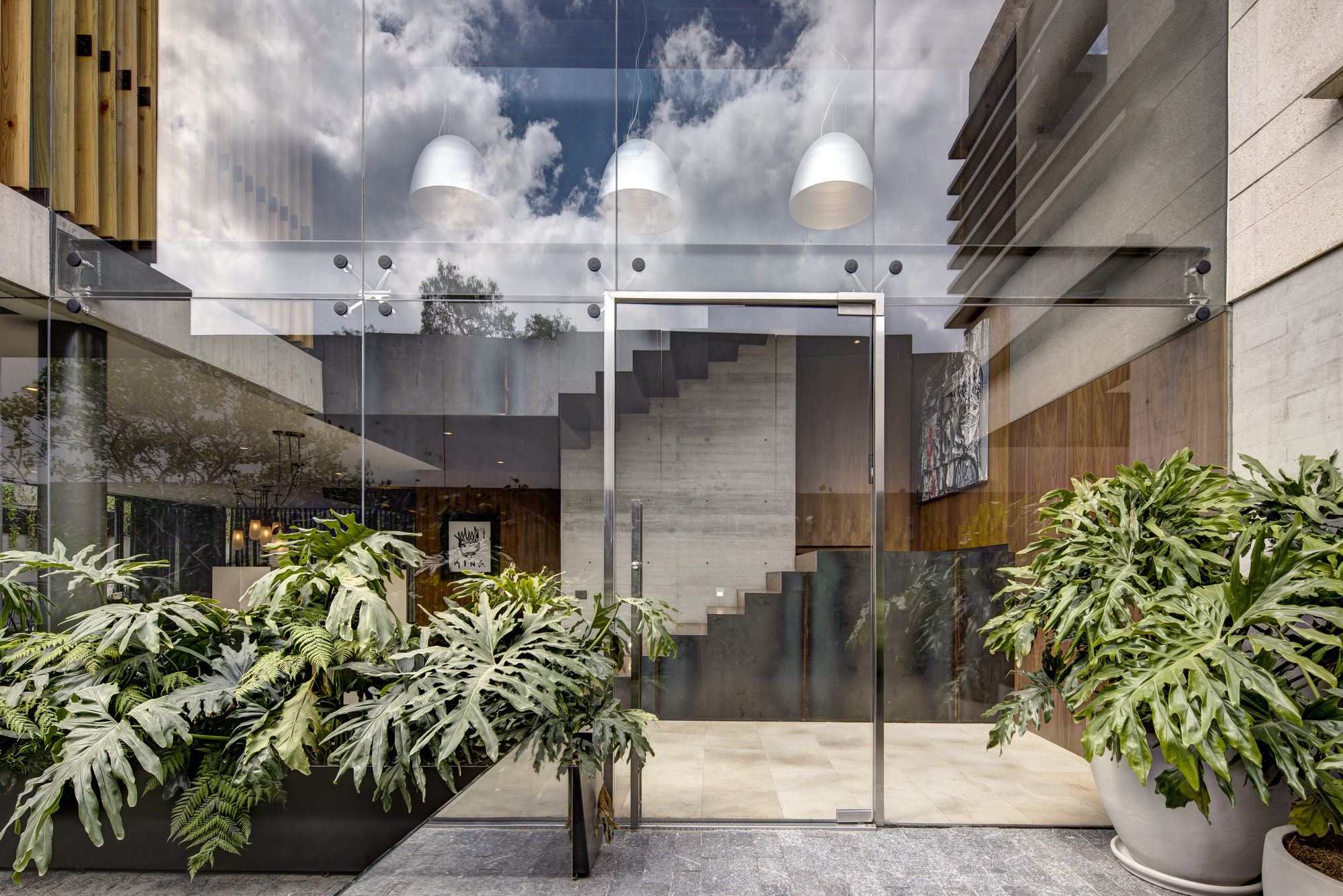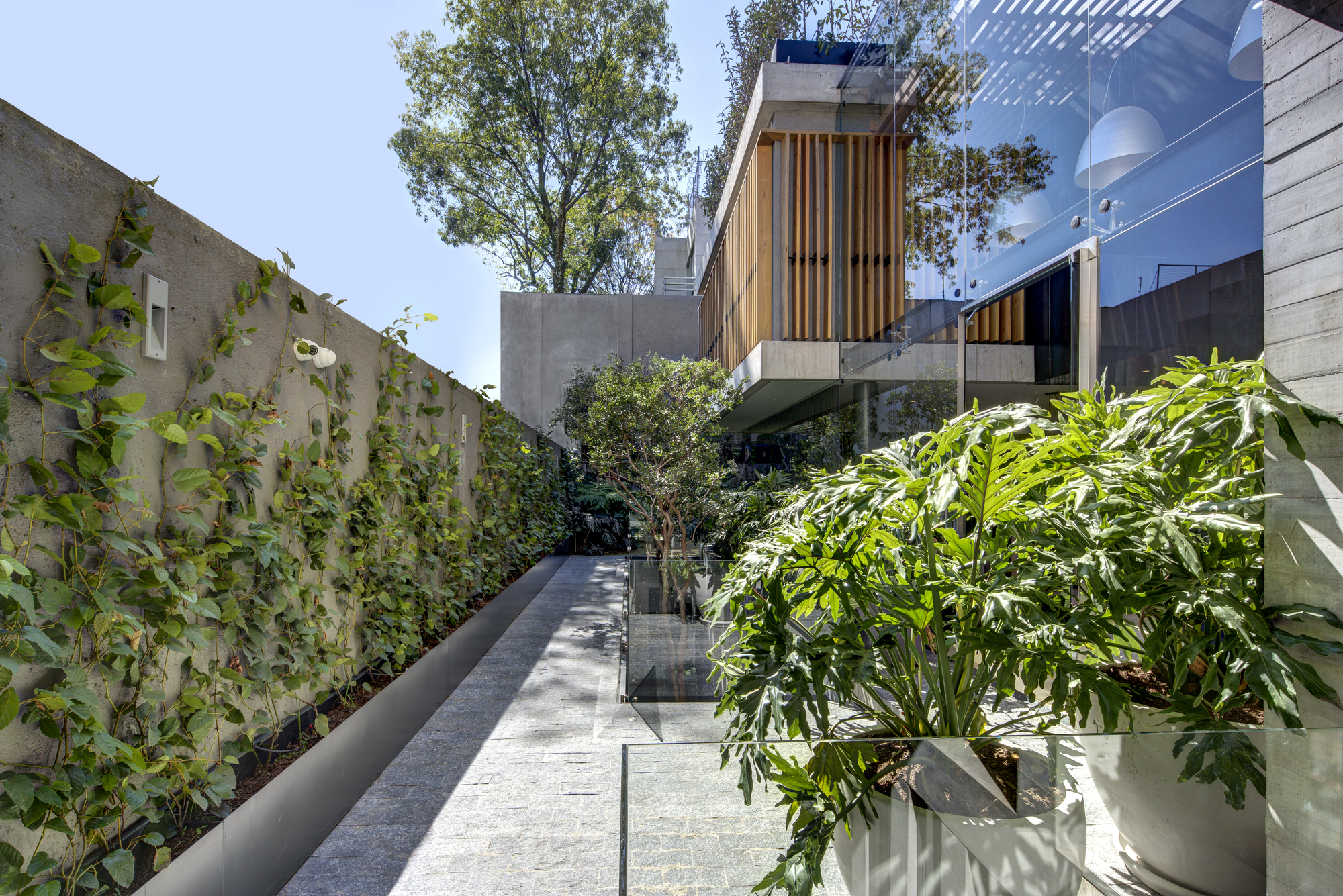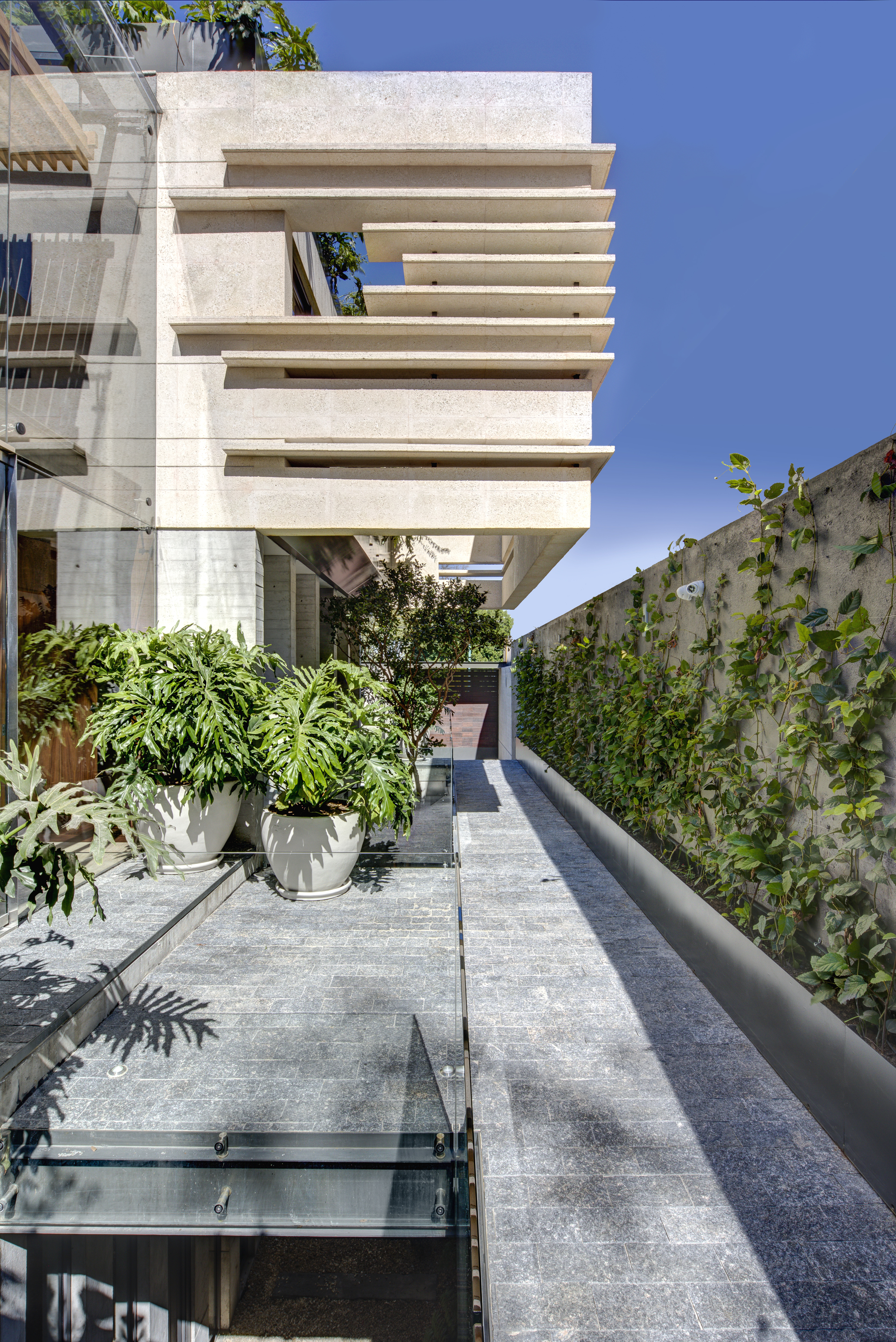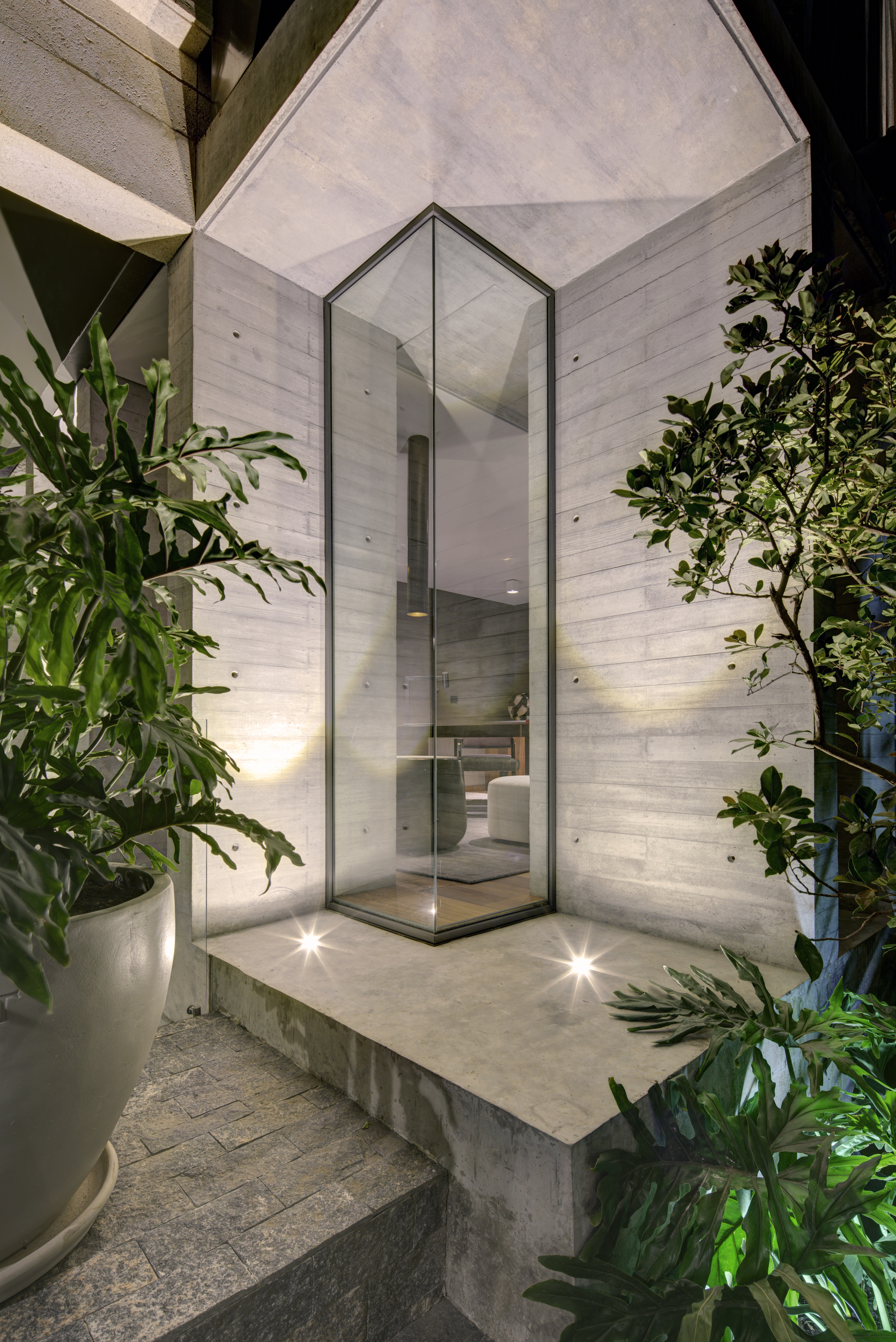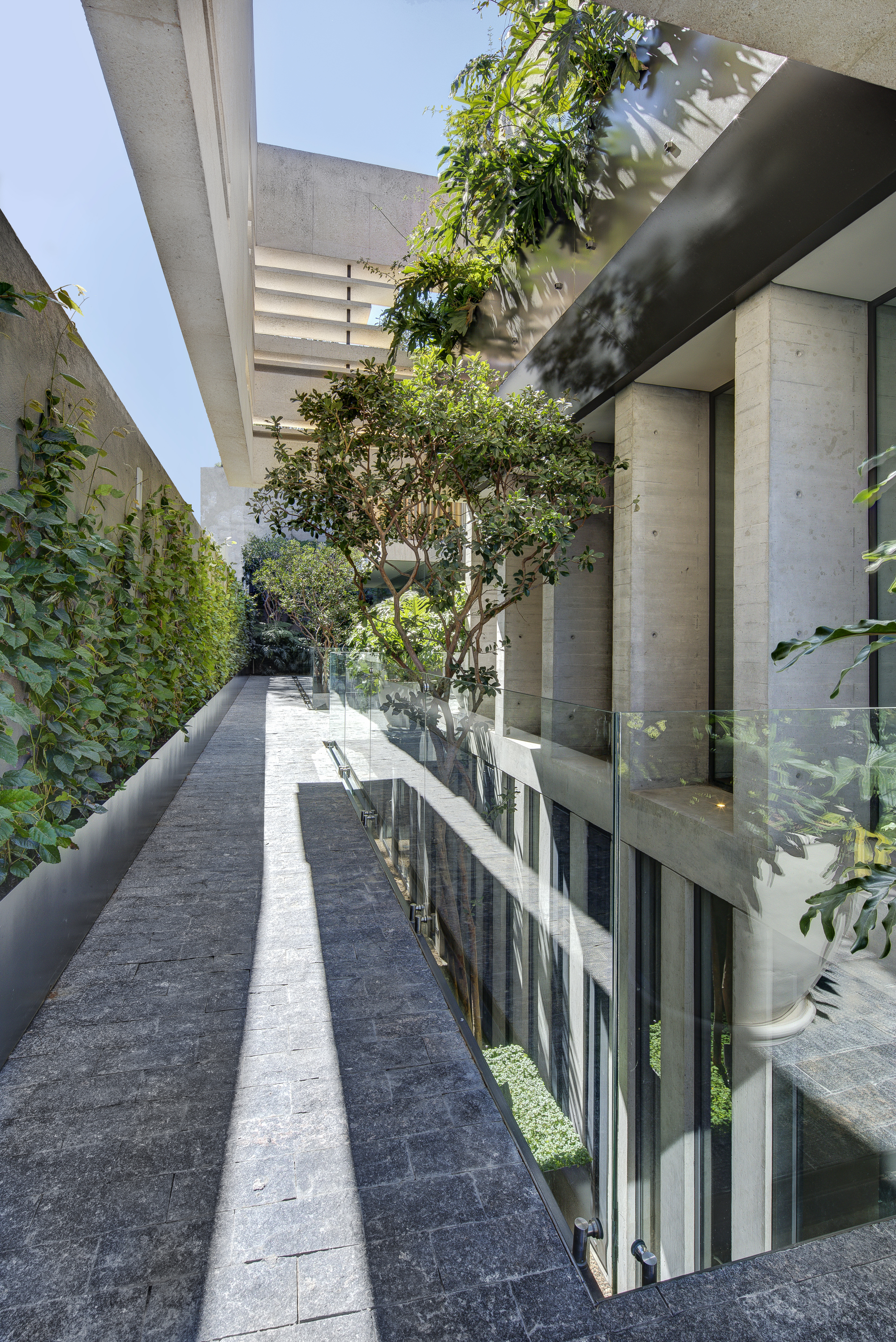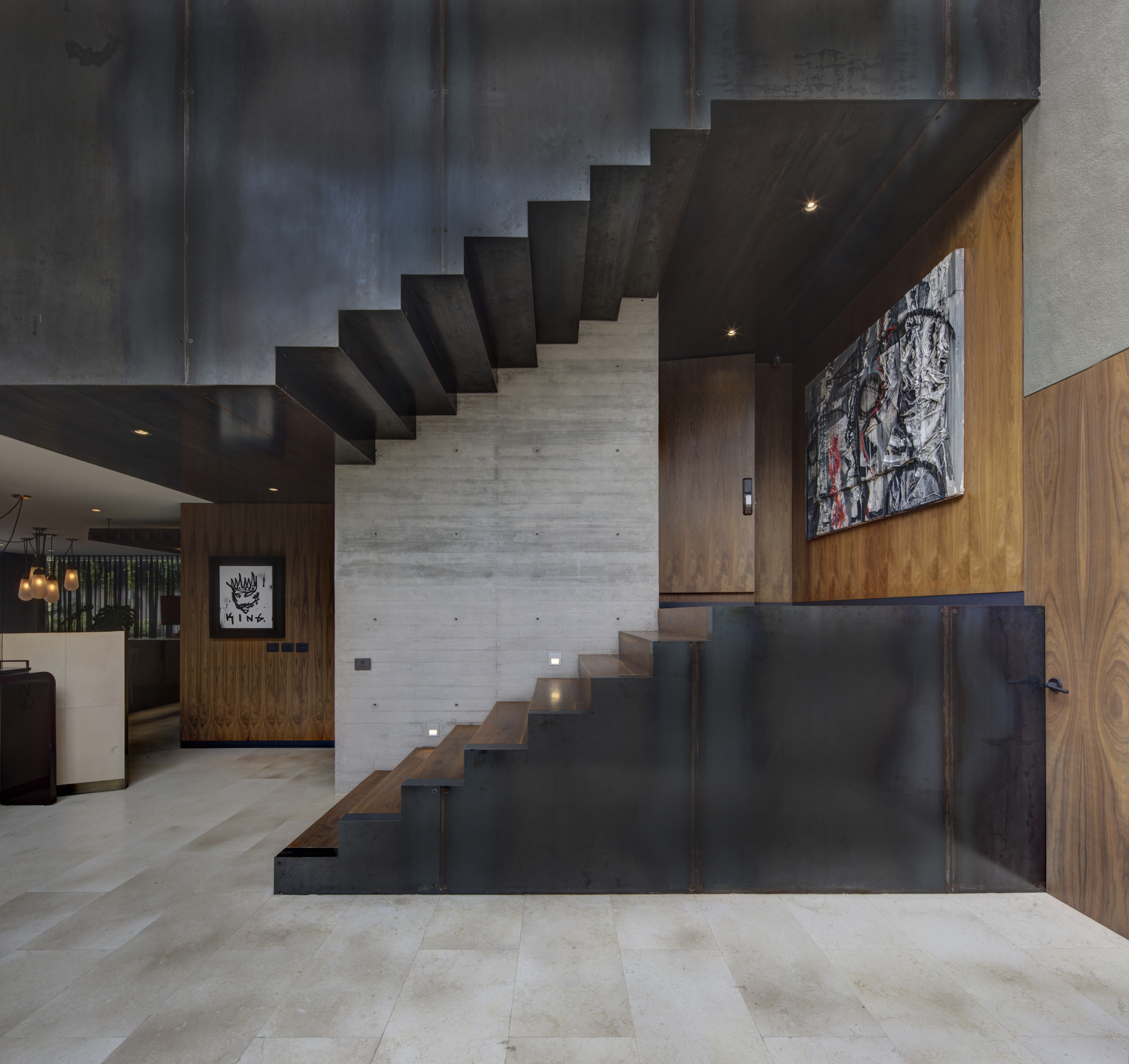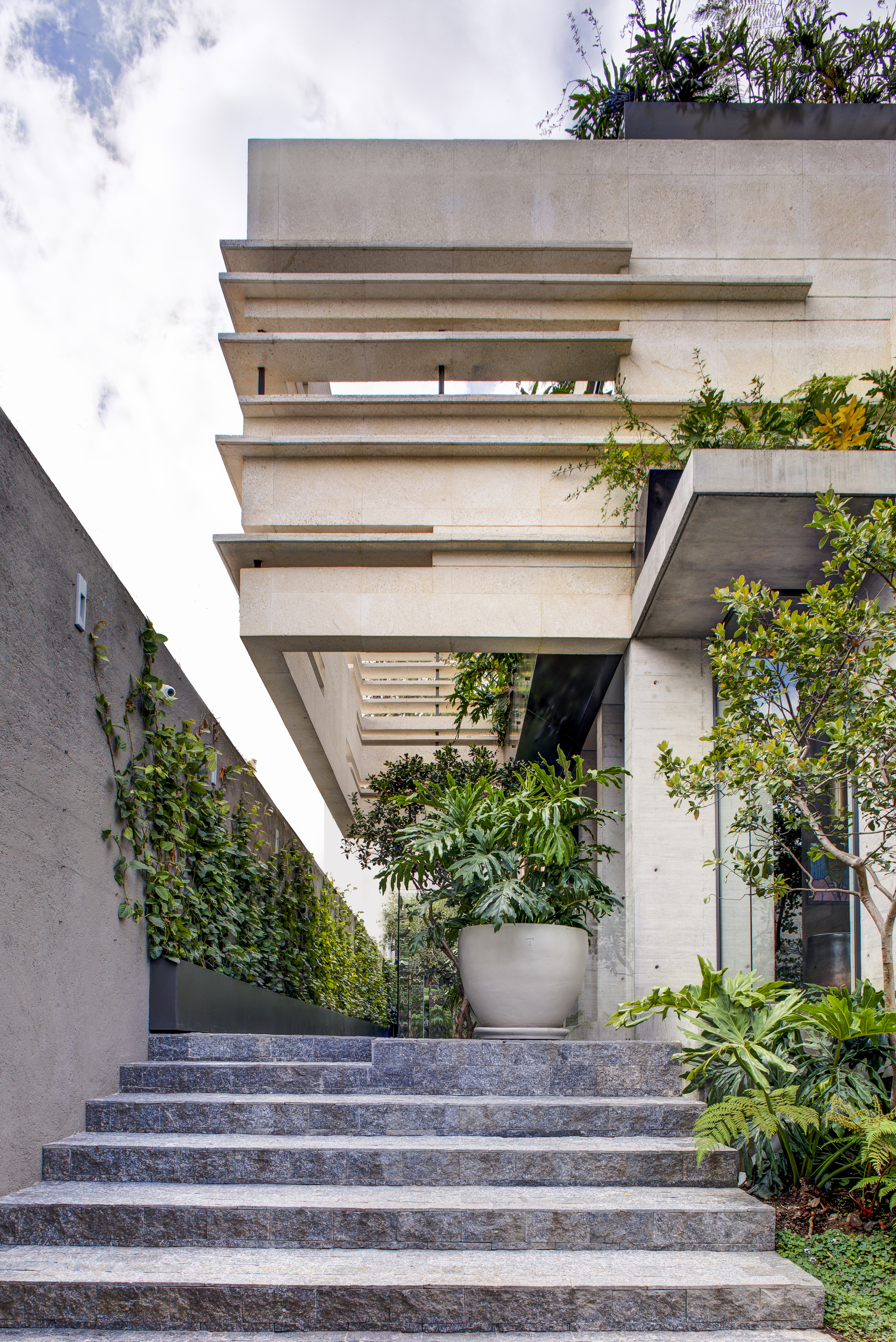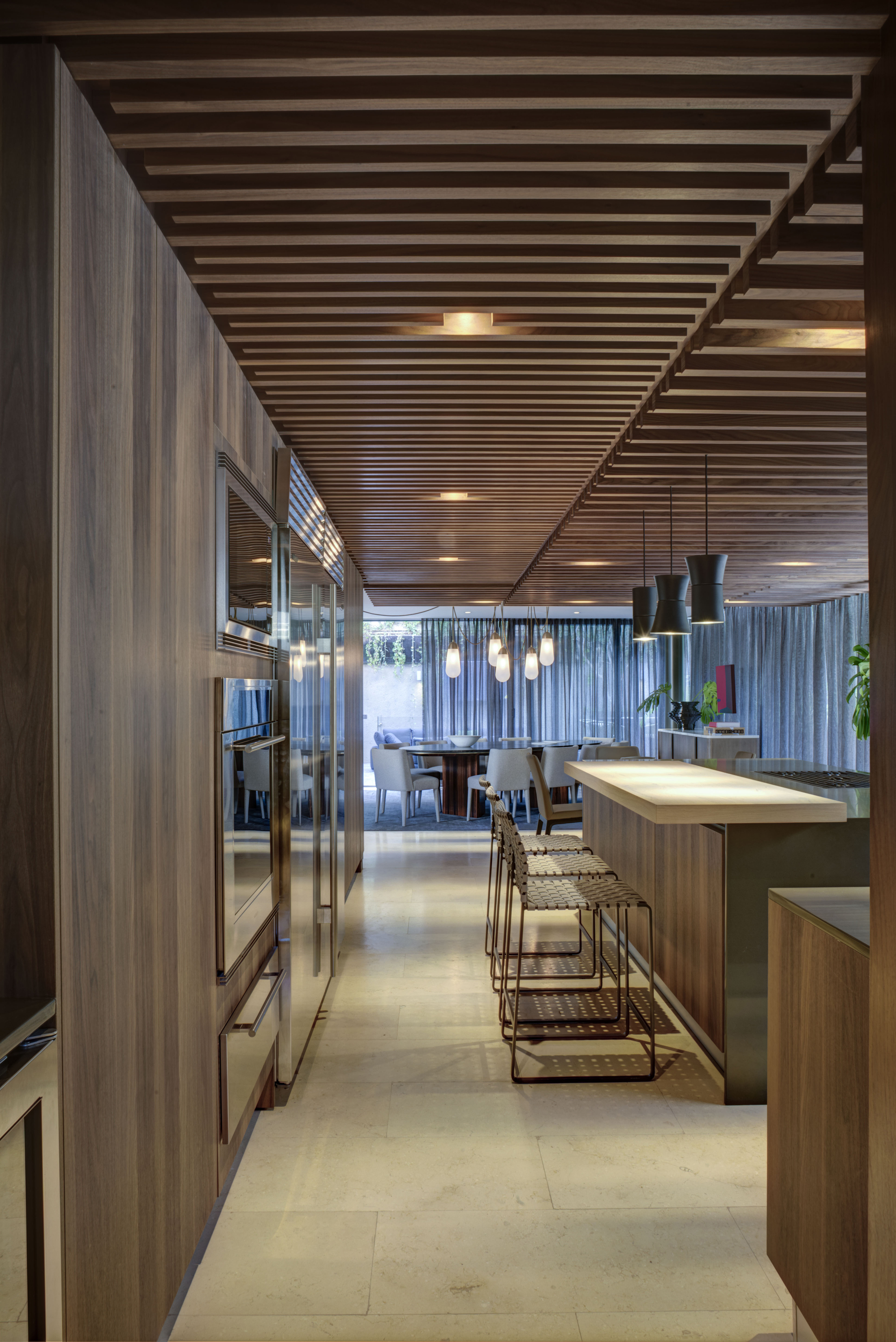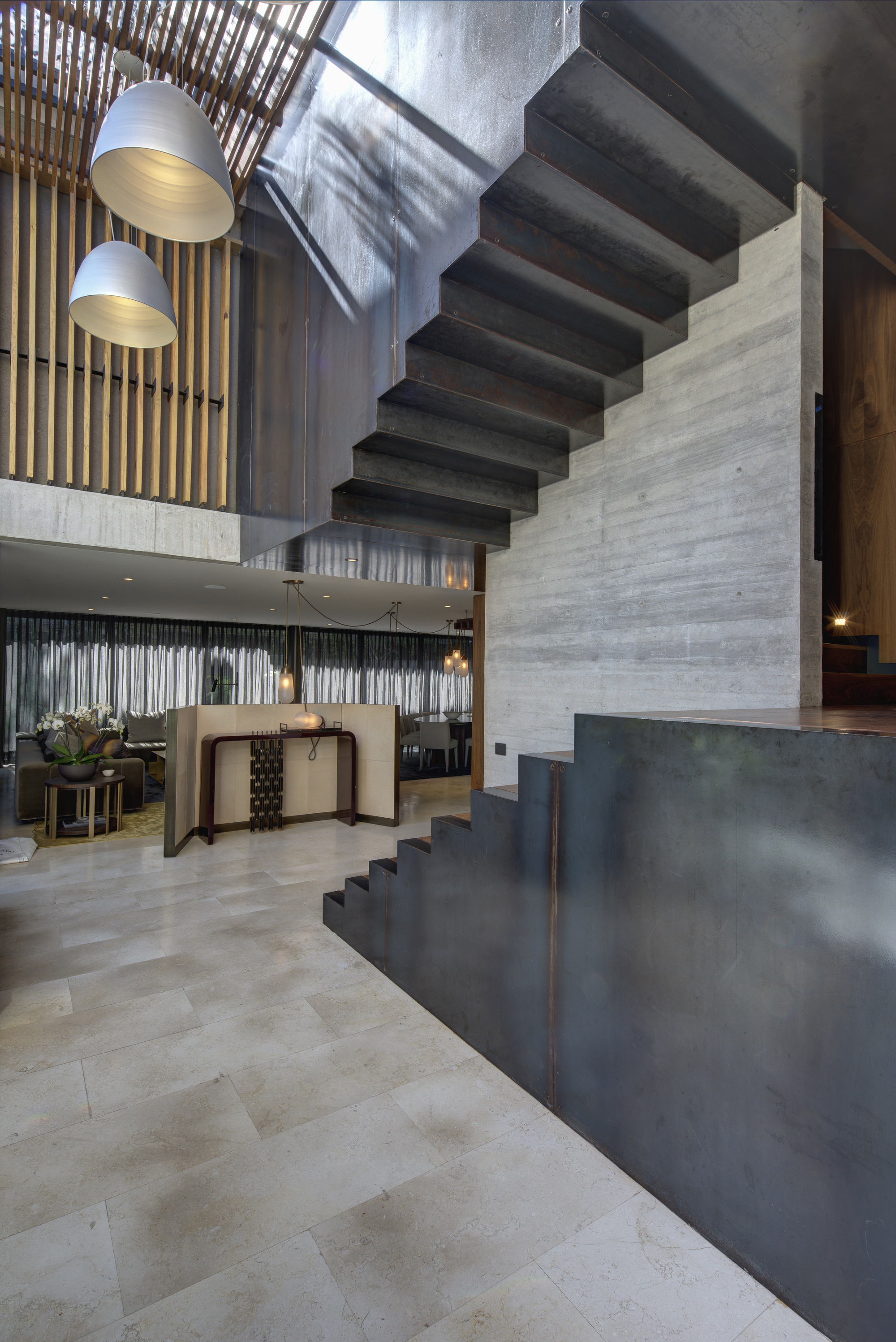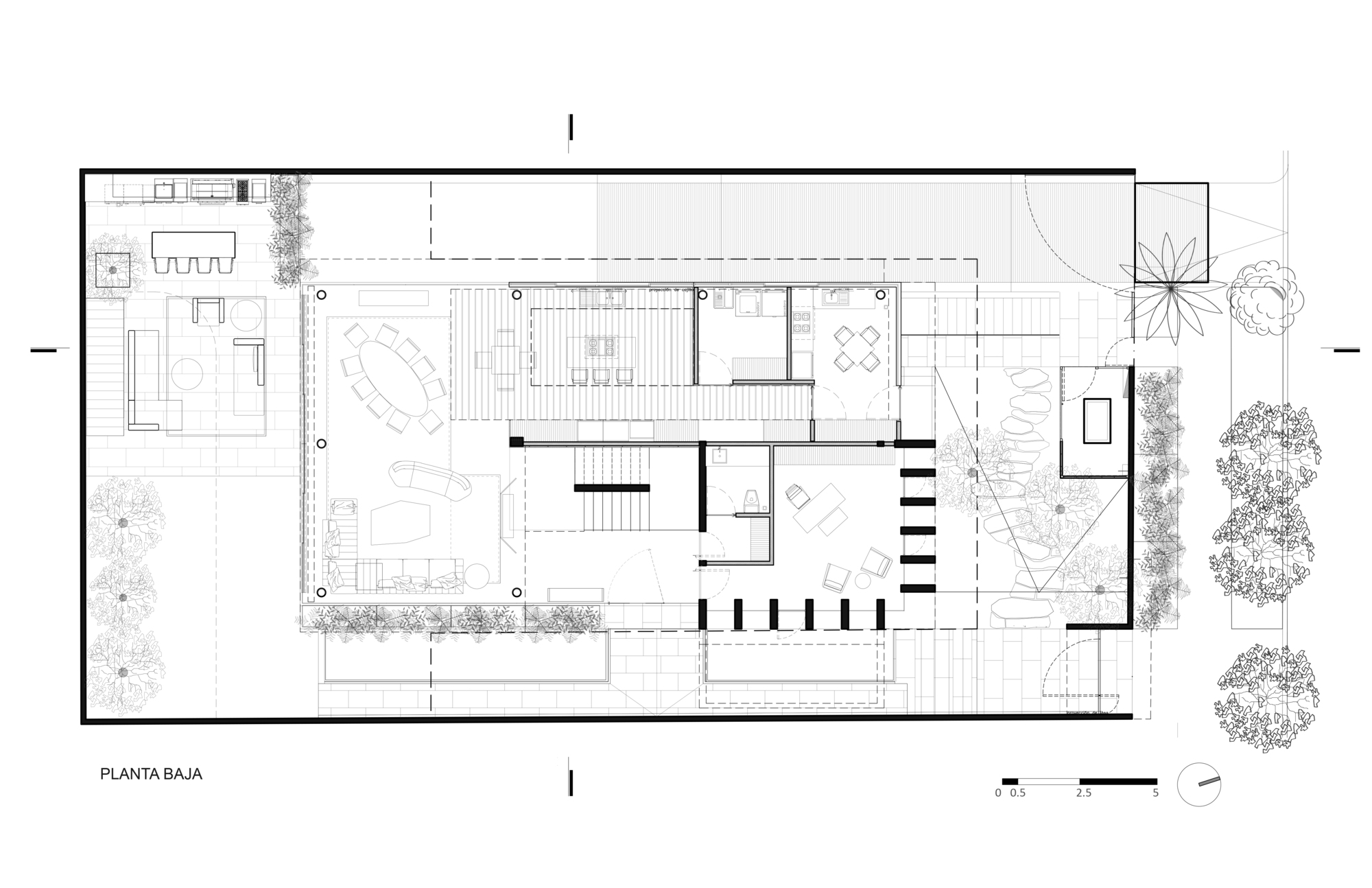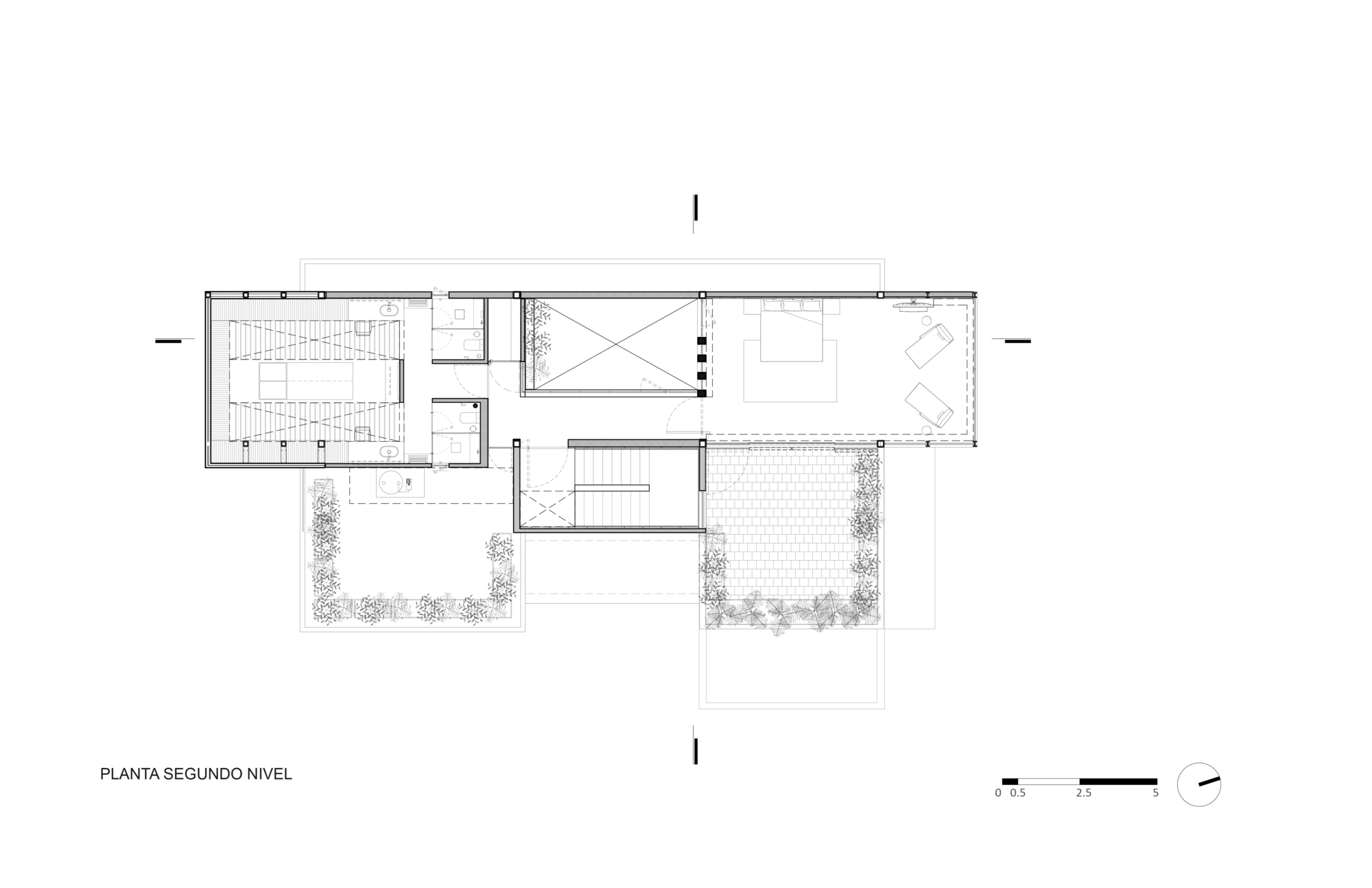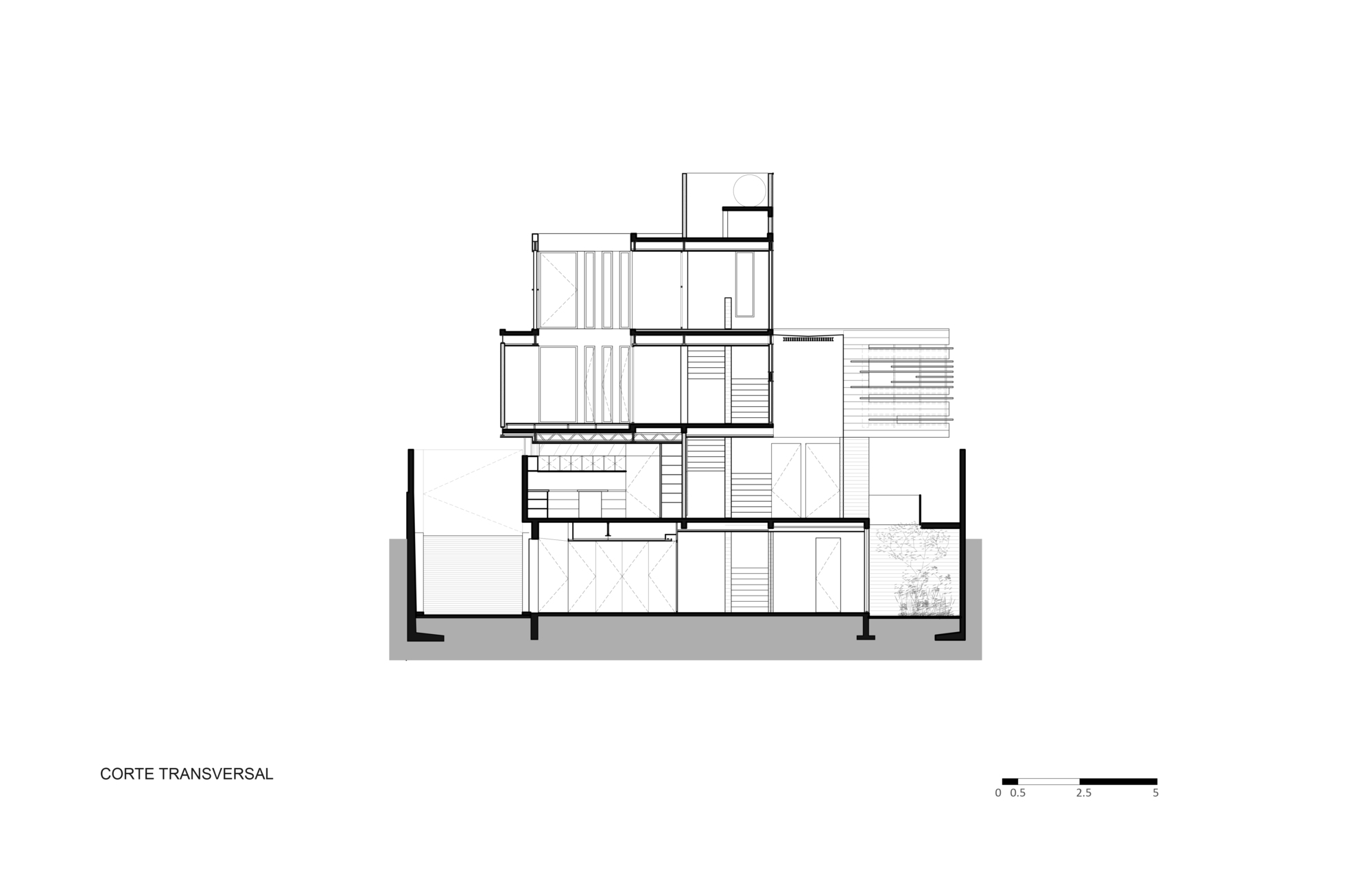The idea that governs the project is to create a house that transports you to a sensory experience despite being immersed in an urban context, an environment where outdoor spaces coexist and permeate the relationship with the interior. This is achieved through gardens that surround the house and generate routes between nature and the building’s own materials: wood, stone, bare concrete, carbon steel plate and glass, marking a distance from the city.
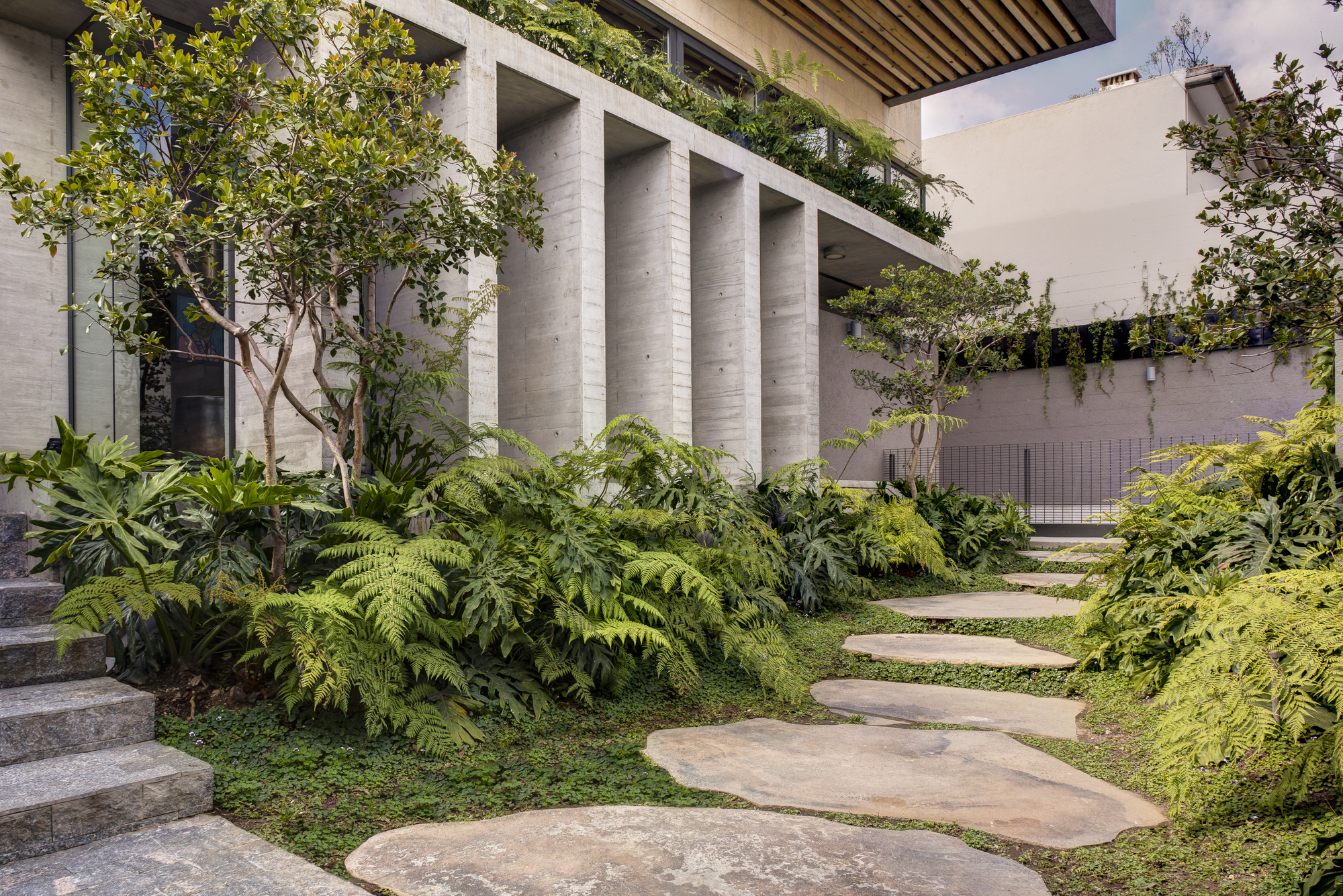

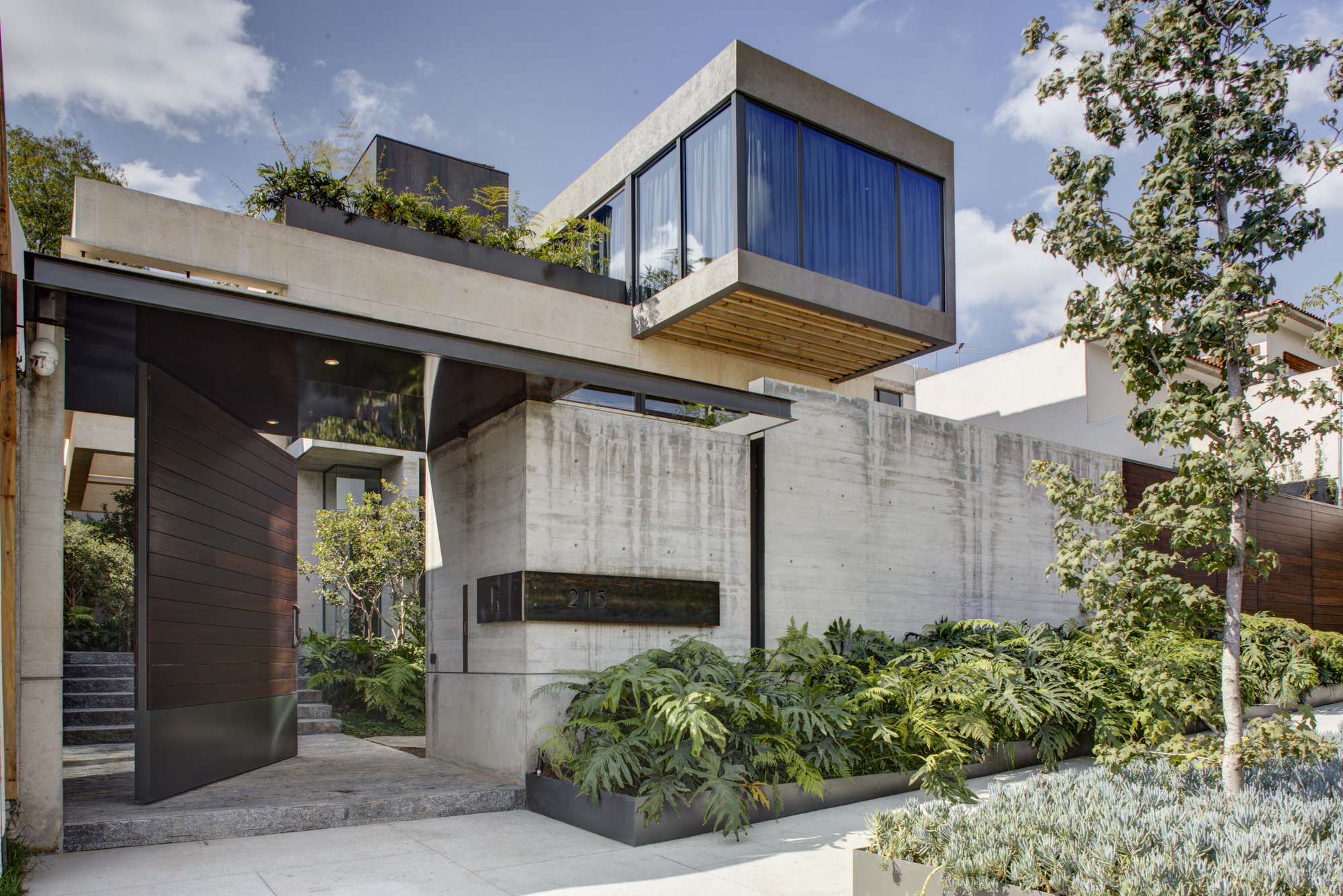
The program of this detached house is distributed in three levels and a basement. The access floor, at street level, contains the social spaces -the living room, the dining room, the study, the kitchen and the service areas – along with the gardens. Along the site, from the access to the back garden, a bridge is developed that controls the access of the house over another garden on basement level. On the first floor, there are three bedrooms with dressing rooms, a TV room and a double-height terrace. The second level contains the main bedroom with a terrace oriented towards the best view of the valley. The basement houses the parking lot, a cellar, a gym, two service bedrooms, a garden and the machine room.
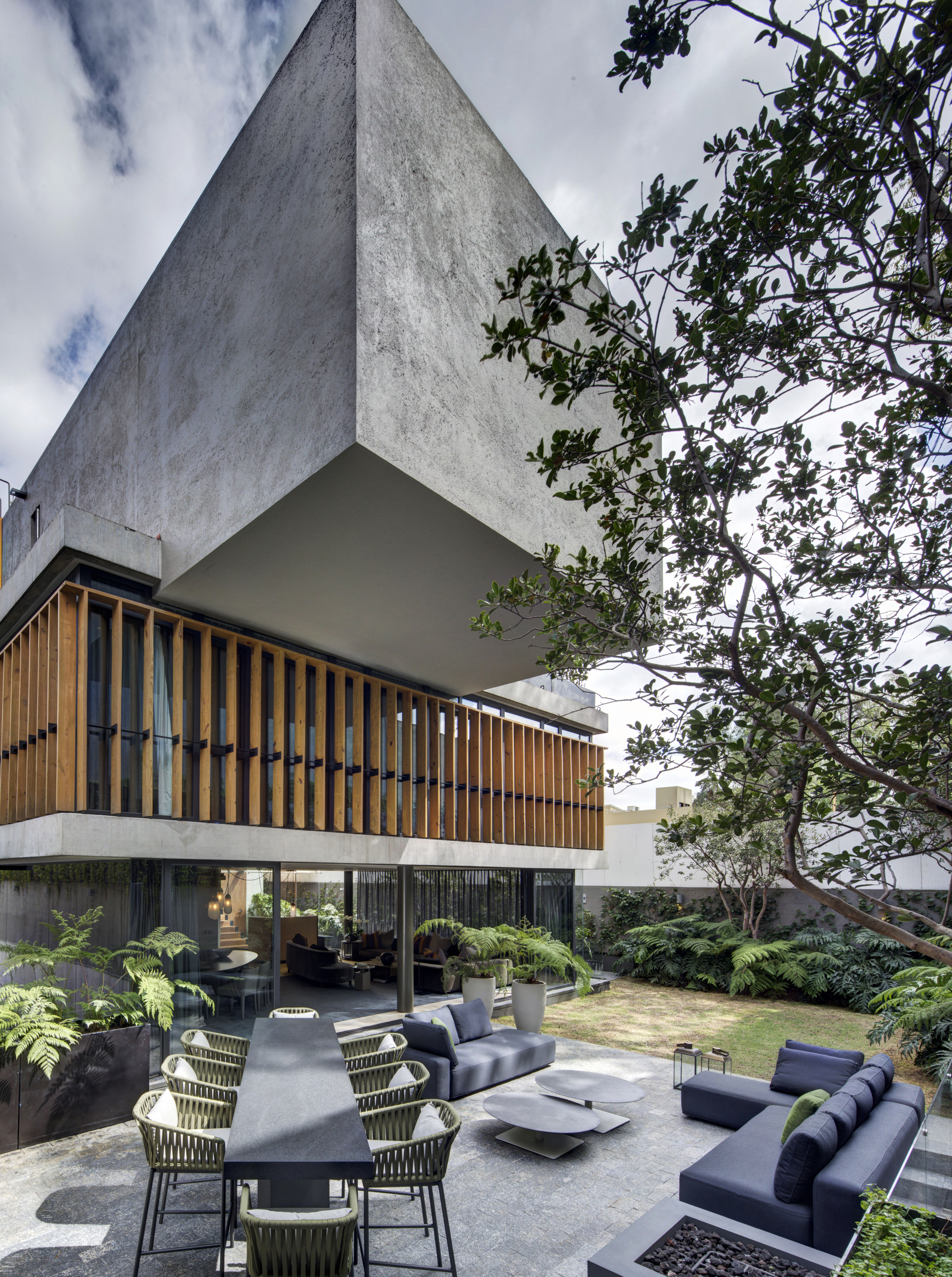
To meet the objectives of the architectural idea, lightweight structural elements were used to free the floor plan and accommodate the entire program of needs without limiting the formal/architectural scope. The structural system used consists of steel columns and angled open-core PTR beams and solid reinforced concrete slabs. Vierendeel armours are used for the two cantilever bodies.
